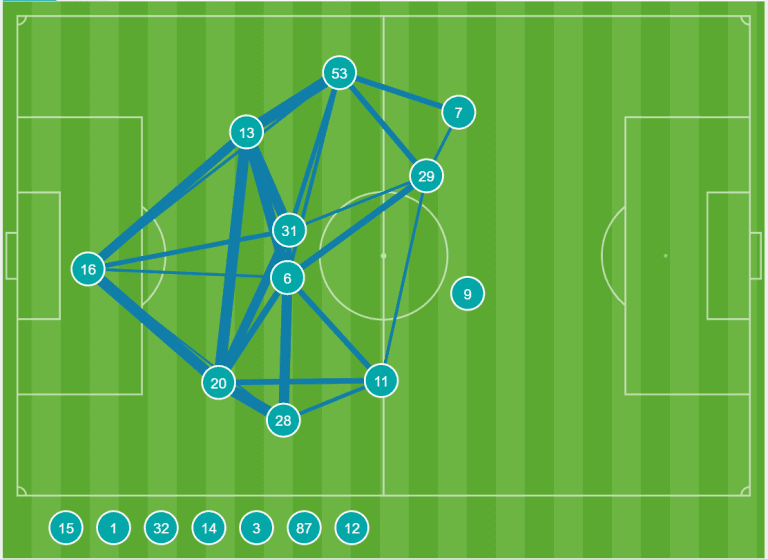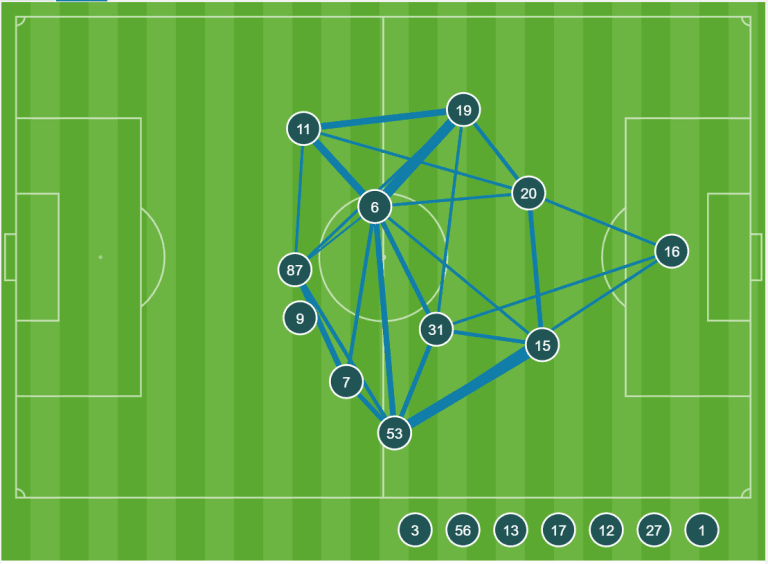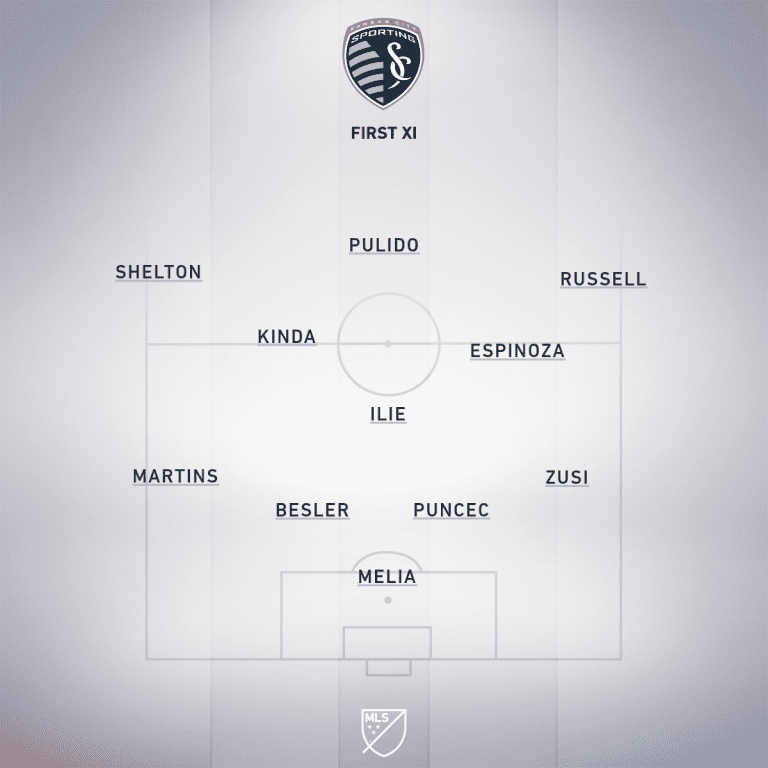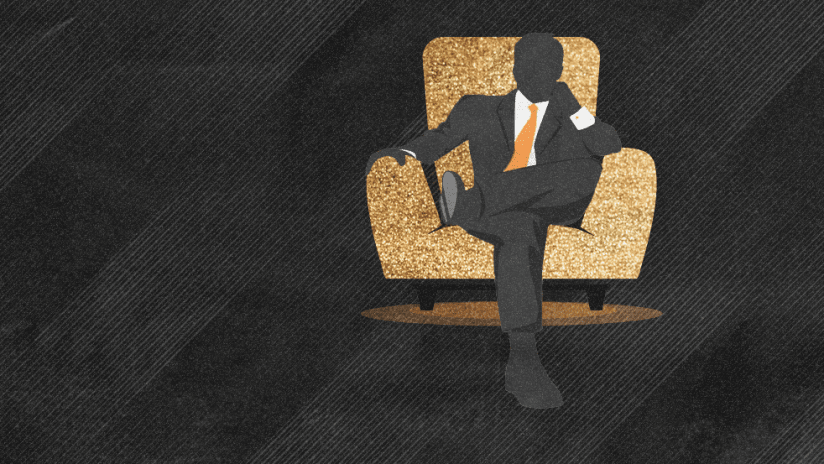Earlier this week we looked at one positional battle to watch for each Eastern Conference team as Preseason 2.0 kicks off. Now we head west.
Once again we'll do reverse alphabetical order because in this house we respect 'Caps fans.
Vancouver Whitecaps
Yordy Reyna vs. Tosaint Ricketts vs. Going to a 4-2-3-1 (FW): The 'Caps played twice, like everyone else, back in the winter. In the first game — an emphatic home loss to Sporting KC — it was kind of a 4-4-2 that was maybe a bit of a 4-4-1-1 with Reyna in the hole underneath Lucas Cavallini. And Cavallini was starved for service:

This is a network passing map generated using Opta data. Each circle's location is indicative of the corresponding player's aggregate touch, and the thickness of the lines connecting them represents the volume of passes exchanged. Cavallini is No. 9.
And yeah, there was a whole lot of nothing for him.
Here's Week 2 at LA, a much truer 4-4-2 with Ricketts up top alongside Cavallini in a 1-0, smash-and-grab for the visitors:

Here's the thing: the 'Caps absolutely dominated xG in both games. If Cavallini'd had his finishing boots with him back in March, Vancouver would be on at least four points. Maybe six. That scoreline was legitimately deceiving.
Either way, he's the obvious starter as the No. 9. The big question for Marc Dos Santos is whether to put another true forward up there with him (Ricketts) to get more numbers into the box, or a hybrid guy (Reyna) who can do a bit more playmaking, or to drop them both for a true midfielder in order to make certain they don't spend the summer playing 2-v-3 in the most important part of the field.
Regardless, Vancouver looked much, much better in the first two games of the season than people seem to want to realize.
Sporting KC
None. They were going to have one for sure in central midfield, but then Felipe Gutierrez got (another) surgery and is gone until 2021. Everybody knows this is their starting lineup, barring injury:

The wingers can, and will, switch sides, as will the two advanced central midfielders. Maybe there's a world in which a finally-fit-again Jaylin Lindsey starts stealing minutes from Graham Zusi.
But I doubt it. Lindsey, Gianluca Busio, Gerso, Daniel Salloi... these guys are the bench brigade.
Seattle Sounders
Joevin Jones vs. Nouhou Tolo (LB): Both these guys are champions. Jones is much, much better pushing forward, and can be/has been a difference-maker when doing so in big moments. He has also been a significant defensive liability at times, and there's a strong argument to be made the Sounders are better when he's a winger rather than an overlapping fullback.
Nouhou's a better and more engaged individual defender who is also happy to overlap all day (including times when he probably shouldn't), but has nothing like Jones' end product. There are trade-offs to consider here.
San Jose Earthquakes
Too Many To List: When you've played as poorly as the Quakes did back in March, and you've won just two of your last 14 games going back to last season, everybody's spot is up for grabs. The new signings were poor, the holdovers were poor, and the results have been poor. At the end of last year it was "yeah they're not getting results, but they're still playing ok and just lack enough oomph in the final third." At the start of 2020 it was "my god, they're roadkill."
The only thing I'm really certain of is Judson will be back in the XI at the expense of one of the other central midfielders. They badly missed his range and destructive ability.
Real Salt Lake
Giuseppe Rossi vs. Sam Johnson vs. Damir Kreillach (No. 9): Johnson's a true No. 9, a goal-scorer whose return last year (9g in a touch over 1300 minutes) was very good. Except he couldn't/didn't nail down the fulltime starting job in spite of those numbers, had a few weird off-field moments, and the team generally played better and got better results with other options out there.
Kreilach, a No. 8 by trade, was one of those other options. Over the past two years he's been effective and RSL have been effective when he's been played as a target forward-ish false 9. That's where he played in this season's first two games, and scored the team's only goal (though to be fair they should've had about four against the Red Bulls in game No. 2).
Rossi isn't really a No. 9, but is more of a drift-around, goal-scoring second forward. That might actually fit what RSL need given how well they've played with Kreilach up top over the past few seasons, and would allow Kreilach to drop back into his natural midfield conductor role.
Though bear in mind, Rossi's the most injury-prone soccer player on the planet and is now 33 years old. So it's unlikely he's a long-term, week-to-week solution.
Portland Timbers
I'll let Rifer handle this one:
The Timbers are spoiled for choice up top, to the point where last year's joint top-scorer (all comps), Jeremy Ebobisse, doesn't even really seem to figure. And that No. 8 spot has been Paredes' to claim for a couple of years now.
But the most pressing issue is right back, where the only options seem to be veteran journeyman Chris Duvall and newly signed 20-year-old Venezuelan youth national teamer Pablo Bonilla. That may not seem like reason to fret, but it's hard to overstate how important to Portland's entire attacking identity the now-departed Jorge Moreira was. He led all fullbacks in touches per 90, and was second only to Romain Metanire in crosses per 90. His 139 total crosses were fourth in the league despite playing in just 27 games.
Portland went months at a time where "get it to Moreira and have him launch one toward the back post" was their gameplan. Replacing that will be hard.
The good news: Moreira was a middling (at best) crosser of the ball, connecting on just 18% of his crosses. The guy at LB, Jorge Villafana? He more than doubled that at 37.2%, as per Opta.
So maybe in the end this will be a good thing in that it forces Portland to either 1) tilt left instead of right, or 2) move away from low-percentage plays like from-the-touchline crosses in the first place.
Minnesota United
Mason Toye vs. Aaron Schoenfeld (backup No. 9): As with Sporting KC, Minnesota United's first XI is set — it's going to be exactly what it was in the first two games of the season, in which they scored eight goals and picked up six points. If it ain't broke, don't fix it.
And most of their depth chart is pretty clear-cut as well, though one surprise back in the winter was that Schoenfeld had beaten out last year's breakout star, Toye, to win the job as Luis Amarilla's back-up. Toye has said all the right things about working hard, impressing the manager and fighting for the spot after playing zero minutes in the first two games, and he's shown the ability to do those things in the past.
I have to admit I'm really curious to see which of these guys Adrian Heath will turn to the first time he's down a goal and needs someone to put the ball in the net.
LA Galaxy
Somebody at right wing (RW): Aleksandar Katai is gone and that means somebody on this roster needs to play on the right side of the "3" line in Guillermo Barros Schelotto's 4-2-3-1. But there are no actual, natural right wingers on this roster anymore.
The best bet is probably Sebastian Lletget, who has played there to some good effect in the past (though he's much better as a free 8 in a structured central midfield, which he keeps showing every time he gets to play for the USMNT). Joe Corona could maybe do the job, or maybe one of the academy kids will get a shot?
I do think LA will make a big signing there. I'm just not sure it'll happen in time for the tournament. Given they're a team that loves to cross the ball just as much as the Timbers do, that's a significant handicap.
LAFC
Brian Rodriguez vs. Adama Diomande (LW/FW): As I see it, this is a direct competition for playing time among these two players (Bradley Wright-Phillips could also sneak into the mix) that isn't just limited to them, but also has far-reaching implications on what LAFC's team shape is and how they play.
Diomande is a true center forward, and when available, he's been incredibly effective with 24g/9a in 2,957 minutes across all competitions. Maybe more importantly: When he is out there, both Carlos Vela and Diego Rossi get to play their natural positions, right wing and left wing, respectively. So it seems simple.
But Rodriguez is an eight-figure investment, and even though he's struggled mightily to turn his talent into goals and assists so far in MLS, he is a field-tilting menace on the ball with an Ignacio Piatti-esque knack for eliminating defenders off the dribble. So there is an argument for playing him at LW and moving Rossi to center forward.
Rossi, of course, is not a center forward, though he can function as one, and has done pretty often over the past year. When he plays there he tends to stay high and try to threaten the opposing backline with his blazing speed. And more often than not his runs are between the weak-side center back and fullback rather than hitting the A gap between the two center backs.
The other option is to play Vela as a game-dictating false 9, which actually worked decently at times down the stretch in 2019. But I can't stress this enough: I hate it and it's bad and they shouldn't do it.
Houston Dynamo
Tomas Martinez vs. Darwin Quintero (Playmaker): We have almost 6,000 minutes worth of Martinez's minutes with the Dynamo (all comps) to know he's not actually much of a playmaker at all. The Argentine DP is tidy and can play the right pass, but he's not shown himself to be the type of guy who can crack open an opposing defense with his vision, or the type who can get on the ball and eliminate individual defenders to open up the game. If you can't do that, then you're not a No. 10 no matter what your jersey says.
Quintero does both of those things at a very high level, and would seem to be a no-brainer here. But Quintero also plays less than zero defense, and considering how porous Houston's midfield has been, and how flimsy their backline has been, it's tough to argue for putting a defensive net negative into the mix. Doing so would almost necessitate a switch from the 4-3-3 to a 4-4-1-1 with both wingers starting deeper – wide midfielders, really. And that itself presents more problems because raise your hand if you think it's smart for Houston to move Alberth Elis farther from the goal.
No one? Yeah, thought so.
The other option is to start Quintero at left wing and leave Martinez at the "10," which pushes Memo Rodriguez to the bench. Except the left side of Houston's defense is Adam Lundkvist (LB) and Maynor Figueroa (LCB), and with Quintero in front of those guys it could (it absolutely will) get ugly.
I don't see an elegant solution for this one.
FC Dallas
Fafa Picault vs. Jesus Ferreira vs. Paxton Pomykal (LW/AM): Only room for two of these guys and it seems fairly clear, at this point, Ferreira is no longer in the mix at center forward. Henceforth he's likely to be either a playmaker or an inverted winger, almost a raumdeuter.
Pomykal is even more flexible. He can play as a No. 8 (his best spot), a No. 10 (the job up for grabs here, though in Luchi Gonzalez's scheme it's more of a free 8), an inverted right winger or a throwback left winger. He is exceptional defensively at all of those, and tidy and creative, though much less of a goal-scoring threat than Ferreira or even Picault.
Picault is a true winger who, while often goal-shy, is just as often a destructive pressing force. I'm not sure any individual player in the league destroys more opposing build-outs per 90, and in the summer sun, that's significant.
One of these guys will sit. I'll go ahead and say I can't imagine it'd be Pomykal, but he's got to get to training and make sure Gonzalez can't imagine that, either.
Colorado Rapids
Andre Shinyashiki vs. Sam Nicholson vs. Jonathan Lewis vs. Nicolas Benezet (Wing): Shinyashiki (LW) and Nicholson (RW) started each of the first two games with Lewis coming off the bench – decisively, in the opener. But that was 1) before Benezet became available, and 2) with Lewis's departure for the Olympic qualifiers in the offing.
Now Benezet is here and there's no imminent absence for Lewis, so it feels like a wide open competition for real. Four guys for two spots, and no excuses if you don't come out as one of the winners.










